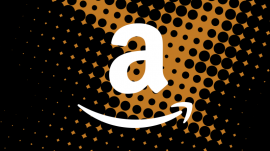How to win on Amazon: Tips for successful keyword strategies


Amazon is not only one of the top digital shopping destinations, but it also has become a major search engine for product-related searches. In a previous Marketing Land article titled, “The Future of Search for CPG Companies,” I discussed the shift in consumer behavior regarding product-level search, making Amazon the product search engine of choice for many consumers.
To win on Amazon, you need to have two things: a great product that actually sells and a well-optimized product page so consumers can find it.
To create these highly optimized product pages, you need to treat and optimize them like any other web page. And, just as with any other search-centric optimization, you must start out with strong keyphrase research to understand what your consumers are looking for.
However, people search differently on Amazon, so when creating your keyphrase strategy, you must consider the differences like query types, query length, conversions and search volume. Today, I want to share some high-level tips that will help you create winning keyphrase strategies for Amazon.
Types of queries
A large share of today’s searches on traditional engines are question-type searches — consumers raising their hands about problems they’re trying to solve or things they want to know, like “Best DSLR camera” or “How to take night shots.” On Amazon, searches are much more product-centric, meaning terms like “camera” or “DSLR” are more popular.
We evaluated the top 100,000 searches on Amazon and determined that the majority (98 percent) were product- or brand-specific searches. The remaining non-product/brand searches (two percent) were mostly movie and book titles.
The overall finding is that nearly all searches on Amazon are branded product or category-level searches such as “digital camera” or “Nikon lens” rather than “camera comparison” or “DSLR review.”
Query length
The length of the search queries on Amazon is very different from that of traditional search engines. Based on our own analysis on the top 100,000 keywords, we determined that 65 percent of the queries were short, two- to three-word queries, while searches on engines like Google tend to run longer and are constantly changing.

Conversions
We all know that traffic alone will not seal the deal. We discovered some interesting insights when we looked at the top 10,000 searches and the resulting conversions in a large beauty category.
The longer queries generally led to better direct conversion rates, while the high-level short queries led instead to additional clicks and search refinement. This means that when optimizing your product pages for search, you need to find a good balance between winning on the high-volume short terms and converting quickly.

Search volume
Given that Amazon doesn’t provide actual search volume, many search marketers take Google AdWords data as its proxy, which, based on our experience, is not always accurate, due to the differences in the types of queries.
To get more accurate numbers, we recommend running a test campaign via Amazon Marketing Services (AMS) or talking to your Amazon rep about purchasing an enterprise analytics solution like ARAP.
When we compared the relative volume of a product term, lifestyle terms and brand terms on Google Trends and Amazon, we noticed a significant difference.

Chart 1: Google
Based on Google’s data for the last 30 days, the lifestyle (upper funnel) terms had the highest volume, followed closely by the product, the last being the brand.
Quite a different story unfolded when we looked at the Amazon data for the same time period. In general, Amazon volume is highest for brand and product-level searches, while lifestyle and upper-funnel terms did not lead to any meaningful impression numbers.

Chart 2: Amazon
When we looked across our clients’ portfolios, we found that product terms had the highest volume the majority of times, followed by brand terms in midfield and upper-level funnel terms barely moving the needle. This might vary for your brand; therefore, I recommend running a short AMS campaign with no budget caps and a high maximum CPC and using the resulting impressions as a volume indicator.
Crafting an Amazon keyphrase strategy
When building an Amazon keyphrase strategy from scratch, there’s a ton of value in your existing keyphrase strategy and search data, so start there. If you’re a reseller of Nikon cameras, you obviously want to target product-level searches like “camera,” “lenses” and “photography equipment” and ignore terms like “best camera,” “photography tips” and so on.
If you don’t have a specific starting point, I recommend the following resources:
1. Google Shopping Trends
This source will give you shopping-specific results by category and/or region. This example link shows top and rising queries for US beauty terms in the last 30 days.
2. Amazon autosuggest
A great way to find relevant Amazon terms is to use the autosuggest menu. Remember the well-converting long-tail search? The data from the autosuggest drop-down can help you find these top terms, as well. Just start with a few product terms, and you’ll build a full list in no time.

3. Related searches
My final recommendation for a great seed list involves the terms generated by the related searches’ functionality. This little widget is triggered after you perform a basic search and will appear above the results.

These terms are often very similar to the search refinements used by previous searchers and will help you create content and campaigns that close the sale sooner by targeting the right terms.
No matter if you’re planning organic or paid Amazon campaigns, I hope this article will help you get started on creating meaningful and relevant keyword strategies to optimize product pages and drive paid media results.
From our sponsors: How to win on Amazon: Tips for successful keyword strategies



